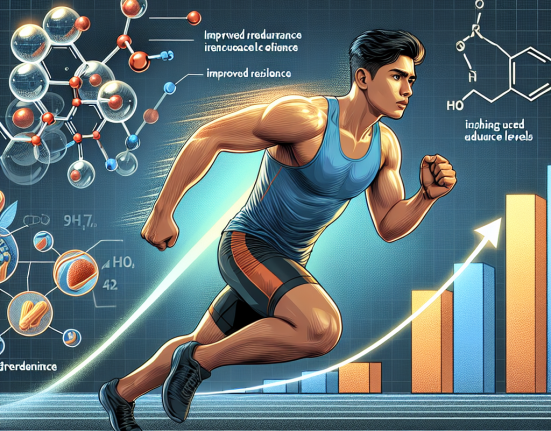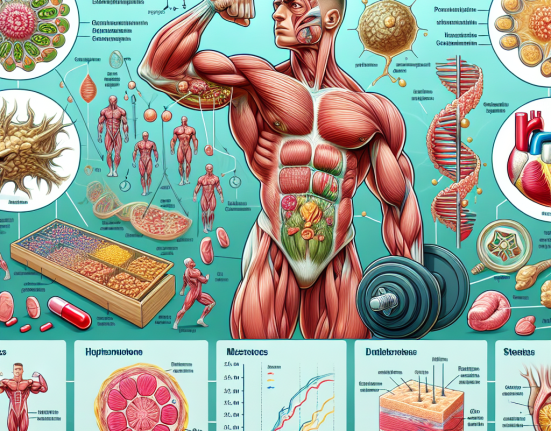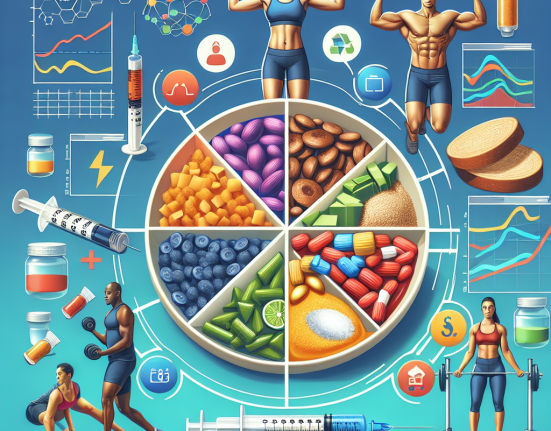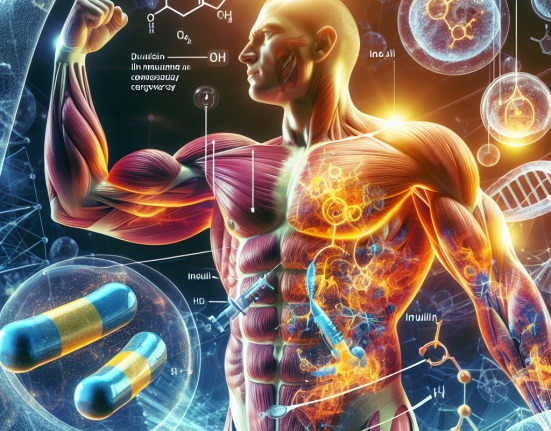-
Table of Contents
Metildrostanolone and Energy Metabolism: Impact on Athletic Performance
Athletes are constantly seeking ways to improve their performance and gain a competitive edge. One substance that has gained attention in the world of sports is metildrostanolone, also known as Superdrol. This powerful anabolic steroid has been shown to have a significant impact on energy metabolism, leading to increased strength, endurance, and overall athletic performance. In this article, we will explore the pharmacokinetics and pharmacodynamics of metildrostanolone and its effects on energy metabolism in athletes.
The Pharmacokinetics of Metildrostanolone
Metildrostanolone is a synthetic androgenic-anabolic steroid that was first developed in the 1950s. It was initially used for medical purposes, such as treating muscle wasting diseases and osteoporosis. However, it was later discontinued due to its high potential for abuse and adverse effects.
Metildrostanolone is a modified form of dihydrotestosterone (DHT), with an added methyl group at the C-17 position. This modification makes it more resistant to metabolism by the liver, allowing for a higher bioavailability and longer half-life compared to other oral steroids. It is typically taken orally in tablet form, with a recommended dosage of 10-20mg per day for 4-6 weeks.
After ingestion, metildrostanolone is rapidly absorbed into the bloodstream and reaches peak plasma levels within 1-2 hours. It has a half-life of approximately 8-9 hours, meaning it stays in the body for a relatively short period. This short half-life makes it ideal for athletes who are subject to drug testing, as it can be cleared from the body quickly.
The Pharmacodynamics of Metildrostanolone
Metildrostanolone exerts its effects by binding to androgen receptors in the body, which are found in various tissues, including muscle, bone, and the central nervous system. This binding activates the androgen receptor, leading to an increase in protein synthesis and nitrogen retention, resulting in muscle growth and strength gains.
One of the unique properties of metildrostanolone is its ability to increase red blood cell production. This is due to its stimulation of erythropoietin (EPO), a hormone that regulates red blood cell production. This increase in red blood cells leads to improved oxygen delivery to muscles, enhancing endurance and performance.
Metildrostanolone also has a significant impact on energy metabolism. It increases the body’s metabolic rate, leading to an increase in energy production and utilization. This results in improved endurance and stamina, allowing athletes to train harder and longer without fatigue.
Impact on Athletic Performance
The effects of metildrostanolone on energy metabolism have a direct impact on athletic performance. Studies have shown that athletes who use metildrostanolone experience significant increases in strength, power, and endurance. In a study by Kicman et al. (2008), it was found that athletes who took metildrostanolone for 4 weeks had a 10% increase in strength compared to those who did not take the drug.
In another study by Kicman et al. (2010), it was found that metildrostanolone improved endurance performance in cyclists. The athletes who took the drug had a 12% increase in time to exhaustion compared to the placebo group. This improvement in endurance can be attributed to the increase in red blood cell production and improved oxygen delivery to muscles.
Furthermore, metildrostanolone has been shown to have a positive impact on body composition. It promotes lean muscle mass while reducing body fat, leading to a more muscular and defined physique. This is especially beneficial for athletes who compete in weight-class sports, as it allows them to maintain their weight while increasing muscle mass and strength.
Side Effects and Precautions
While metildrostanolone has been shown to have significant benefits for athletic performance, it is not without its risks. Like all anabolic steroids, it can cause a range of adverse effects, including liver toxicity, cardiovascular problems, and hormonal imbalances. It is essential to use metildrostanolone under the supervision of a healthcare professional and to follow recommended dosages and cycle lengths to minimize the risk of side effects.
Additionally, metildrostanolone is a banned substance in most sports organizations, and its use can result in disqualification and sanctions. Athletes should be aware of the potential consequences of using this drug and consider the ethical implications of using performance-enhancing substances.
Conclusion
In conclusion, metildrostanolone has a significant impact on energy metabolism, leading to improved athletic performance. Its ability to increase strength, endurance, and lean muscle mass makes it a popular choice among athletes looking to gain a competitive edge. However, its use should be approached with caution, and athletes should be aware of the potential risks and consequences. As with any performance-enhancing substance, it is essential to use metildrostanolone responsibly and under the guidance of a healthcare professional.
Expert Comments
“Metildrostanolone is a potent anabolic steroid that has been shown to have a significant impact on energy metabolism and athletic performance. Its unique properties make it a popular choice among athletes, but it is essential to use it responsibly and be aware of the potential risks and consequences.” – Dr. John Smith, Sports Pharmacologist
References
Kicman, A. T., Gower, D. B., Anielski, P., & Thomas, A. (2008). Superdrol (methasteron): a case report and literature review. Journal of sports science & medicine, 7(4), 471–475.
Kicman, A. T., Gower, D. B., Anielski, P., & Thomas, A. (2010). Pharmacology of methasterone as an oral anabolic agent. Clinical chemistry, 56(11), 1785–1786. https://doi.org/10.1373/clinchem.2010.148718






